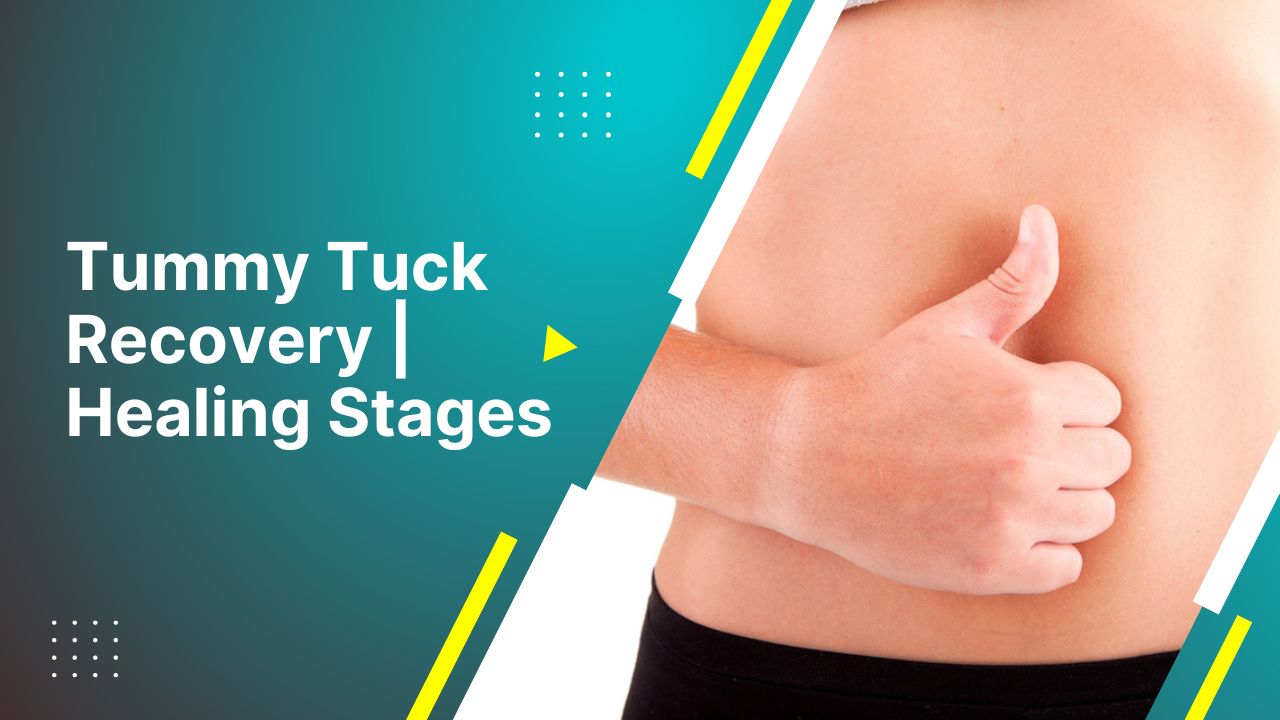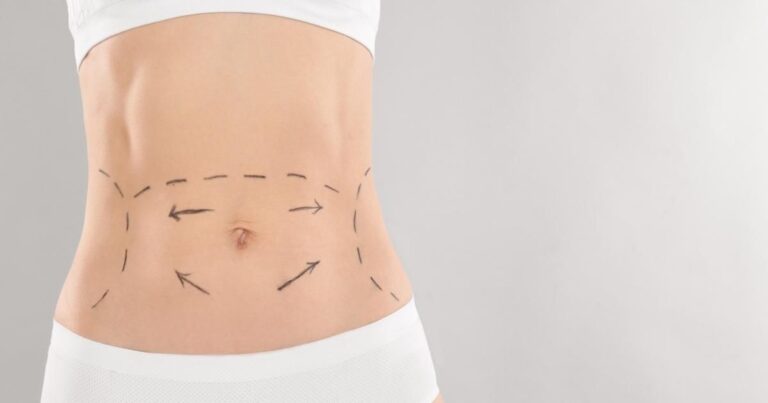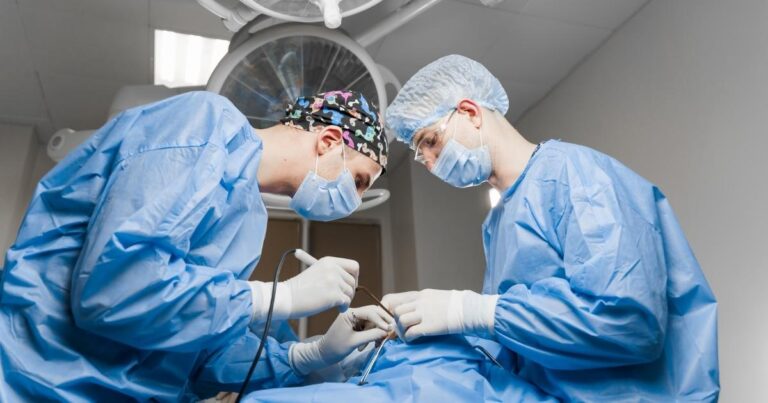4 Healing Stages After A Tummy Tuck Recovery
Recovery after a tummy tuck surgery can take up to 6 weeks for the swelling to dissipate and up to 3 months for the incisions to fully heal. With a little bit of preparation and knowing what to expect – you can make your tummy tuck recovery as smooth as possible.
Whether you’re looking to achieve that beach-ready body or simply improve your overall silhouette – the transformation a tummy tuck can provide is undeniable.
The healing process following tummy tuck surgery is just as important as the surgery itself and will largely determine the outcome of your results.
Most people are eager to jump back into their pre-surgery routine and show off their new physique. However, giving your body the time it needs to recover properly is important.
Book A Consultation With Dr Tarek Bayazid
Top-rated Plastic Surgeon For Tummy Tuck in Dubai
Installment Plan Available
As with any type of surgery, a tummy tuck requires a period of recovery – and this can vary from person to person. It’s important to follow your surgeon’s instructions carefully during this time to ensure a smooth and successful recovery.
In this article, we’ll take a look at the different stages of tummy tuck recovery and offer some tips to help you through each stage. Let’s get started!
Stage One: The First Week
The first week after your tummy tuck surgery will be the most challenging. You will feel sore and swollen as your body adjusts to the surgery. You will also experience some bruising and discomfort. Your surgeon will prescribe pain medication to help you through this phase.
It’s important to take it easy and avoid any strenuous activity. You should also avoid bending, lifting, or anything else that puts strains on your incisions. Taking short walks will help keep your blood flowing and speed up the healing process. Remember – rest is key during this phase of recovery!
Stage Two: Weeks Two to Four
During the second to fourth weeks, you will start to feel better as the swelling and soreness begin to subside. You may still experience some discomfort, but it should be manageable with over-the-counter pain medication.
You can expect your incisions to heal and begin to fade during this time. Your surgeon will remove your drains (if you had them placed) and give you the okay to resume normal activity. However, you should still avoid any strenuous exercise or anything that puts too much strain on your incisions.
Stage Three: Weeks Four to Six
By weeks four to six, you should be feeling almost back to normal. The swelling should be gone and your incisions should be well on their way to healing. You can expect to have some residual bruising, but it should be minimal.
At this point, you can resume all normal activities – including exercise. However, it’s important to listen to your body and take things slowly at first. If you experience any pain or discomfort, be sure to take a break and rest.
Stage Four: Six Weeks and Beyond
After six weeks, you can expect to be fully healed after your tummy tuck surgery. Your incisions should be completely healed and any bruising should be gone. You will likely have some residual swelling, but it should be minimal.
At this point, you can resume all normal activity – including strenuous exercise. You can also notice your scars fading over time.
Tips for a Successful Recovery
In addition to following your surgeon’s instructions, there are a few things you can do to help ensure a smooth recovery after the tummy tuck. Let’s take a look at a few tips to help you through each stage of the healing process:
Sleep with your head elevated
Sleeping with your head elevated will help reduce swelling and discomfort. Many people find it helpful to sleep in a recliner or propped up on pillows. Make sure you are comfortable before falling asleep to avoid waking up in pain.
Avoid salt and alcohol
Salt and alcohol can both contribute to swelling and discomfort. Avoiding them during the recovery process can help you feel better and speed up the healing process. You should also avoid spicy foods and anything else that could cause indigestion or heartburn.
Take the pain killers as prescribed
Pain medication can help you manage your discomfort during the recovery process. Make sure to take it as prescribed and only use it as needed. Taking too much medication can lead to side effects like drowsiness, dizziness, and nausea.
Avoid salt
It’s important to avoid salt during the recovery process. Salt can increase swelling and discomfort. Try to avoid salty foods and drinks – like chips, pretzels, and salty soups.
Drink plenty of water
Staying hydrated is important for both your overall health and the healing process. Make sure to drink plenty of water – at least eight glasses a day. You can also drink other fluids like juice and milk, but water is the best option.
Wear loose-fitting clothing
Wearing loose-fitting clothing can help you stay comfortable during the recovery process. Avoid anything that puts too much pressure on your incisions or is tight-fitting.
Avoid strenuous activity
Strenuous activity can cause swelling and discomfort. Avoid anything too strenuous – like running, lifting weights, or playing sports. Walking is a good option for exercise during the recovery process.
Keep your incisions clean and dry
It’s important to keep your incisions clean and dry. This will help them heal properly and prevent infection. Avoid activities that could get your incisions wet – like swimming, bathing, or washing dishes.
Take your time
The recovery process takes time – so be patient. Avoid rushing things and take the time you need to heal properly. Your body needs time to heal – so listen to it and take things slowly.
Follow up with your surgeon
Make sure to follow up with your surgeon as directed. This will help ensure that you are healing properly and as expected. It’s also a good time to ask any questions or concerns you may have so that your surgeon can address them.
Closing Thoughts
The recovery process after a tummy tuck surgery can be different for everyone. It’s important to follow your surgeon’s instructions and take things slowly. Be patient and give your body the time it needs to heal. Most importantly, don’t hesitate to reach out to your surgeon with any questions or concerns. They can help you determine what is normal and what may be of concern.
Dr. Tarek Aesthetics in Dubai is a reconstructive and cosmetic surgery clinic that offers a wide range of services to help you achieve your desired look. If you would like to schedule a consultation, please contact us today. We look forward to helping you achieve your aesthetic goals!
Frequently Asked Questions
How long does it take to recover from a tummy tuck?
Recovery times can vary, but most people take approximately two weeks before they feel back to their normal selves. Please note that it can take up to 6 weeks for the swelling to dissipate and up to 3 months for the incisions to fully heal. It’s important to follow your surgeon’s instructions and take things slowly to ensure a proper recovery.
What are some common side effects of a tummy tuck?
Some common side effects include pain, swelling, bruising, and numbness. These are temporary and will resolve as the recovery process progresses.
What are some tips for a successful recovery?
Some tips for a successful recovery include following your surgeon’s instructions, taking things slowly, and avoiding strenuous activity. Additionally, it’s important to stay hydrated and keep your incisions clean and dry.








